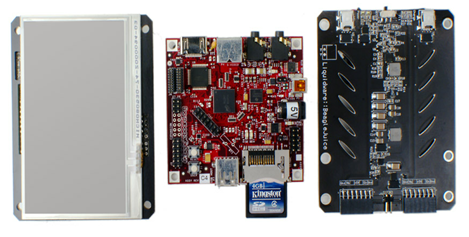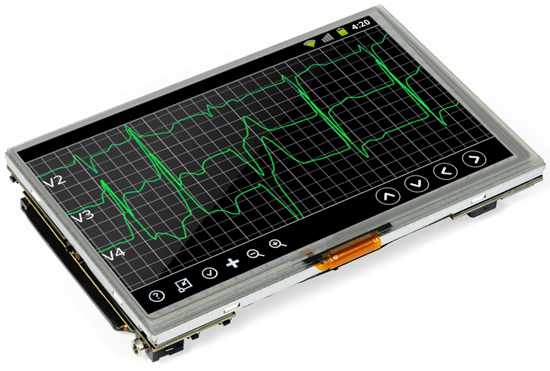That’s also something that I spend a disproportionate amount of time working on. Now, rather than starting from scratch, I’m starting from the level of say, ripping the case off my tablet and rooting it. It’s not as violent as it sounds. The point is, I need something about 80% of the way to a tablet.

Conversely, I could build my way back up from something like a BeagleBoard, but in many cases, it’s much more of a prototype than I really need.

After a while, we had an “80%-finished”, 7” Android tablet that came in very handy as a starting point for custom tablet-related projects. I like to think of it as a “foundational technology”, but since that’s quite a mouthful, we decided to call it the Amber. This is the part where it looks like a tablet…

…And this is the part where it looks very…80%-finished.
The whole idea being that I want a starting point far enough along, so I don’t need to build everything from scratch, but not so far along that it’s a pain to customize.
The Amber is a 7” projected capacitive tablet driven by a 1 GHz, ARM Cortex-A9 OMAP3730 from Texas Instruments. We’ve customized a version of Android Gingerbread 2.3.4 to run on the Amber, and its 2 USB host ports offer high-speed USB and serial communications to a pretty wide range of devices. WiFi, Ethernet, cellular, and battery configurations are available as part of the Enhanced or Pro versions of the Amber.

I’ll be uploading more shots and tutorials of cool (and hopefully useful) things I’ve worked on with the Amber and Android development. Meanwhile, here’s a couple videos of the Amber in action:
5 comments:
Sorry to be the bearer of bad news, but the AT&T USBConnect Force 4G is HSPA+ pseudo-4G, not 4G LTE. I blame AT&T Marketing for their stupid 3G-rebranding.
Source: http://www.att.com/esupport/article.jsp?sid=KB409356&cv=820&ct=7100005&pv=2&title=Device+Specifications+of+the+AT%26T+USBConnect+Force+4G+(E368)#fbid=d3_U-mNq_B2
Looks like a very nice design.
A minor thing on the diagram- I think you have the 16GB microSD and 1GHz ARM labels swapped.
@cyrozap - thanks for the heads up. I heard about something along these lines. In this case it's just a matter of labeling. I was just excited to get the USB cellular modem working pretty quickly!
@Unknown - that must be an old version of the diagram...I'll update. Good eyes!
Does this do USB host mode, allowing it to work with the Arduino accessory kit? That would be HUGE.
Cortex-A9??? DM3730 is Cortex-A8!
Post a Comment